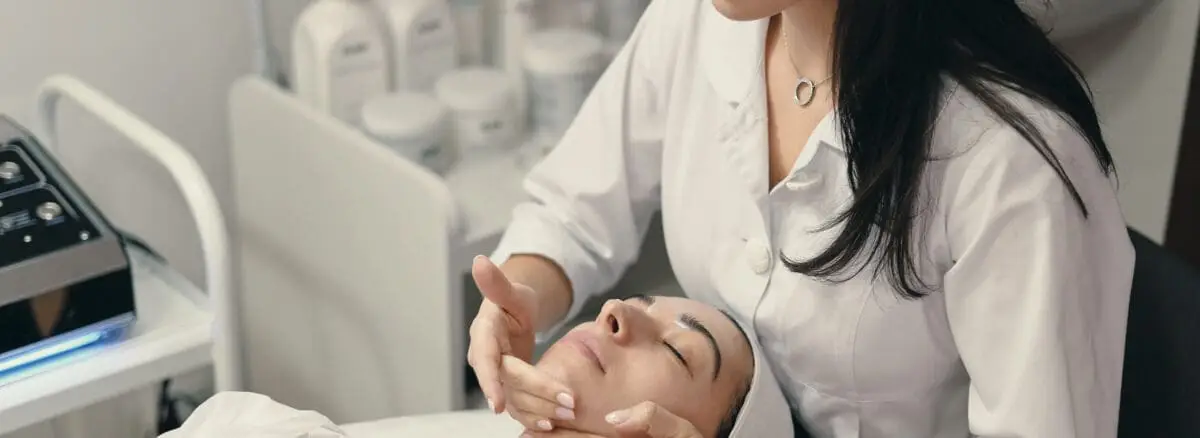Achieving a brighter, more radiant complexion is a common skincare goal, but with so many skin brightening treatments available, it’s easy to feel overwhelmed. This article addresses the most frequently asked questions about skin brightening treatments, offering clear and concise answers to help you understand what these treatments are, how they work, and which options might be best for your skin.
1. What is skin brightening?
Skin brightening refers to treatments and products designed to enhance the skin’s natural radiance by reducing dullness, uneven skin tone, and hyperpigmentation. Unlike skin whitening or bleaching, which aims to lighten the overall skin color, skin brightening focuses on improving the skin’s clarity and luminosity, resulting in a more even and radiant complexion. Common ingredients in brightening products include vitamin C, niacinamide, and alpha hydroxy acids (AHAs).
2. How do skin brightening treatments work?
Skin brightening treatments work by targeting and reducing excess melanin production, which is responsible for dark spots, hyperpigmentation, and uneven skin tone. Treatments can include topical products, chemical peels, laser therapy, and microdermabrasion. These methods exfoliate the skin, promote cell turnover, and inhibit melanin synthesis, leading to a brighter, more even complexion over time. The effectiveness of each treatment depends on the specific skin concern and the individual’s skin type.
3. Are skin brightening treatments safe?
Most skin brightening treatments are safe when performed correctly and with appropriate products. However, it’s important to choose treatments suited to your skin type and concerns. Overuse of brightening agents, such as hydroquinone or strong acids, can cause skin irritation, sensitivity, or even worsen pigmentation if not used properly. Consulting with a dermatologist before starting any skin brightening treatment is recommended to ensure safety and effectiveness.
4. What are the common ingredients in skin brightening products?
Common ingredients in skin brightening products include vitamin C, niacinamide, alpha hydroxy acids (AHAs), kojic acid, and arbutin. Vitamin C is a powerful antioxidant that reduces dark spots and boosts collagen production. Niacinamide helps to even out skin tone and strengthen the skin barrier. AHAs exfoliate the skin, promoting cell turnover, while kojic acid and arbutin inhibit melanin production, reducing pigmentation over time.
5. How long does it take to see results from skin brightening treatments?
The time it takes to see results from skin brightening treatments varies depending on the type of treatment and the severity of the skin concern. Topical products may show noticeable improvement within 4 to 8 weeks of consistent use. Professional treatments, such as chemical peels or laser therapy, may produce faster results, with significant changes visible within a few sessions. Patience and consistency are key for achieving and maintaining brighter skin.
6. Can skin brightening treatments be used on all skin types?
Yes, skin brightening treatments can be used on all skin types, but it’s important to choose the right treatment based on your skin’s specific needs. For example, individuals with sensitive skin should opt for gentler formulations, such as products with niacinamide or low-concentration AHAs. Those with darker skin tones should be cautious with certain laser treatments or high-strength peels, as they may increase the risk of hyperpigmentation if not performed correctly.
7. What is the difference between skin brightening and skin lightening?
Skin brightening focuses on enhancing the skin’s natural radiance by reducing dullness, hyperpigmentation, and uneven skin tone. It does not change the skin’s overall color but makes it appear more luminous and even. Skin lightening, on the other hand, involves reducing melanin production to lighten the overall skin tone. Lightening treatments often use stronger ingredients, such as hydroquinone, and may aim to achieve a lighter skin shade.
8. Are there any side effects of skin brightening treatments?
Side effects of skin brightening treatments can include redness, irritation, peeling, or increased sensitivity, especially when using products with strong active ingredients like retinoids or AHAs. Overuse of certain brightening agents, like hydroquinone, can lead to ochronosis, a condition where the skin darkens instead of lightening. To minimize side effects, it’s important to use these treatments as directed and to consult a dermatologist if you experience any adverse reactions.
9. Can skin brightening treatments help with acne scars?
Yes, skin brightening treatments can help reduce the appearance of acne scars, particularly post-inflammatory hyperpigmentation (PIH), which appears as dark spots after acne heals. Ingredients like vitamin C, glycolic acid, and retinoids can lighten these spots by promoting cell turnover and reducing melanin production. However, for deeper acne scars, additional treatments like microneedling, laser therapy, or chemical peels may be needed to achieve significant improvement.
10. How often should skin brightening treatments be used?
The frequency of skin brightening treatments depends on the type of treatment and your skin type. Topical products like serums and creams can be used daily, preferably in the evening, to allow the skin to repair overnight. Exfoliating treatments, such as chemical peels or scrubs, should be used less frequently, typically once or twice a week, to avoid over-exfoliation. Professional treatments, such as laser therapy, are usually performed every few weeks or months, depending on the treatment plan.
11. Can skin brightening treatments be used with other skincare products?
Yes, skin brightening treatments can be used in conjunction with other skincare products, but it’s important to ensure compatibility. For example, using a brightening serum with a gentle moisturizer can enhance results without causing irritation. However, be cautious when combining strong active ingredients, such as retinoids with AHAs, as this can lead to increased sensitivity or irritation. Always introduce new products gradually and monitor your skin’s response.
12. Do I need to use sunscreen with skin brightening treatments?
Absolutely. Sunscreen is essential when using skin brightening treatments, as these treatments often increase the skin’s sensitivity to UV rays. Failing to protect your skin from the sun can worsen pigmentation and undo the benefits of the brightening treatments. Use a broad-spectrum sunscreen with at least SPF 30 daily, reapplying every two hours when exposed to the sun, to maintain the results and protect your skin.
13. Are natural skin brightening treatments effective?
Natural skin brightening treatments can be effective, though they may work more slowly than clinical options. Ingredients like licorice root extract, vitamin C from citrus fruits, and papaya enzymes can help reduce pigmentation and brighten the skin. While natural treatments are generally gentler and have fewer side effects, their efficacy may vary depending on the concentration and the individual’s skin type. For more significant results, they can be used alongside other brightening methods.
14. Can skin brightening treatments be done at home?
Yes, many skin brightening treatments can be done at home using over-the-counter products such as serums, masks, and exfoliants containing brightening ingredients like vitamin C, niacinamide, and AHAs. Home treatments are convenient and cost-effective, but for more stubborn pigmentation or significant results, professional treatments like chemical peels or laser therapy may be necessary. It’s important to follow product instructions carefully to avoid overuse and irritation.
15. How do I choose the right skin brightening treatment for my skin?
Choosing the right skin brightening treatment depends on your skin type, concerns, and goals. If you have sensitive skin, opt for milder treatments with ingredients like niacinamide or low-concentration vitamin C. For more pronounced pigmentation, stronger ingredients like retinoids or professional treatments may be necessary. Consulting with a dermatologist can help you identify the most effective treatment plan tailored to your skin’s specific needs, ensuring safe and effective results.
If you have further questions or need personalized advice, to ensure you choose the best treatment for your skin’s needs.



